MARIANI’SVirtual
Gourmet
November 17,
2013
NEWSLETTER
HOME
| BOOKS
| ABOUT US
| CONTACT

❖❖❖
THIS WEEK
RX:
WHAT TO AVOID EATING WHILE TRAVELING
by John Mariani
IN
MEMORY OF CHARLIE TROTTER
by
John Mariani
NEW
YORK CORNER
Le Bernardin
by John Mariani
NOTES FROM THE WINE CELLAR
Some California Pinot Noirs Aim
for Higher Quality, Not Alcohol
by John Mariani
❖❖❖
RX:
WHAT TO AVOID EATING WHILE TRAVELING
by John Mariani
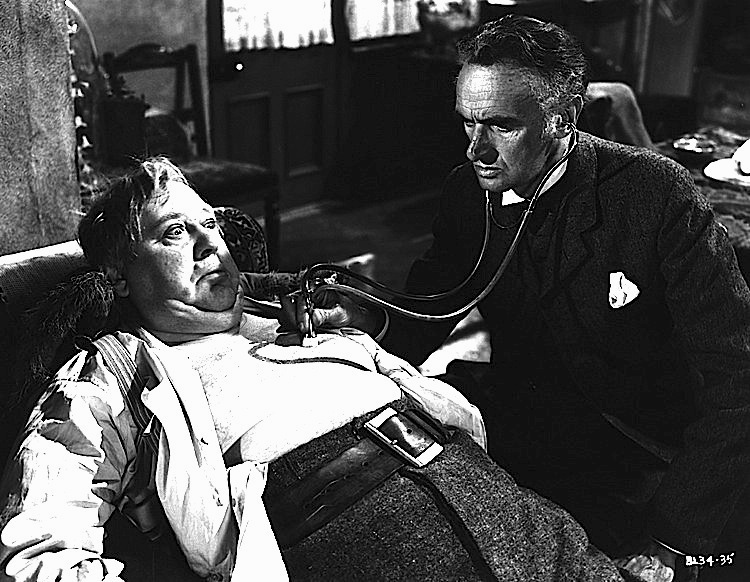
Eating
the kind of
bizarre foods TV omnivore Andrew Zimmern (right) puts in
his mouth each week was once
the hapless lot--never the intent--of 19th century
adventurers like Sir Richard
Burton, who while trekking from Zanzibar into the
Congo would have given
anything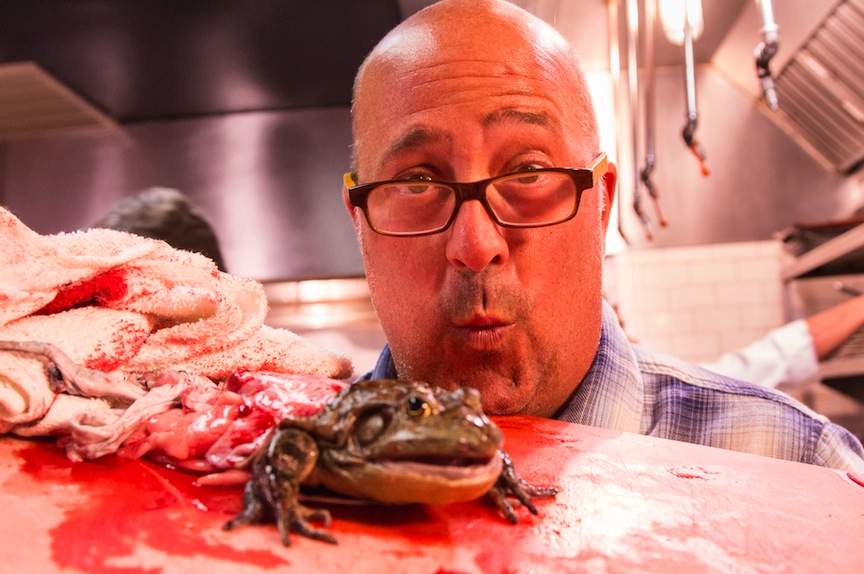 for some good
British beef and Yorkshire pudding.
for some good
British beef and Yorkshire pudding.
Traveler’s illnesses will
lay low, even kill, guys who count themselves manly if
they gulp down stinky
tofu in Taipei or maggots in the Yucatan. Ernest
Hemingway would have
shot anyone on safari who suggested he drink the blood
of a water buffalo.
It’s
bad enough just
dealing with unwashed lettuce in a salad in Madrid
much less shrimp pulled up
from the putrid rivers of Phnom Penh. And you can just
as easily come down with
Delhi Belly in Mumbai as you can Montezuma’s Revenge
in Mexico City.
You’re never going to
escape it entirely, not on the Champs
Élysées or the Via Veneto, though you
can
take precautions by watching out for certain foods
that have a greater chance
of bringing you to your knees talking to Ralph on the
big white phone.
 The basic problem is that
if you grew up in the U.S., no matter how healthy your
are, you haven’t
developed defenses against all exotic bacteria.
The stress of travel, the
different schedules and missed routines can compromise
your immune system so
that you’re ripe to fall prey to bacteria from
something as
innocent-looking as a stalk of celery. Even a cold,
uncooked soup like gazpacho
can mean trouble.
The basic problem is that
if you grew up in the U.S., no matter how healthy your
are, you haven’t
developed defenses against all exotic bacteria.
The stress of travel, the
different schedules and missed routines can compromise
your immune system so
that you’re ripe to fall prey to bacteria from
something as
innocent-looking as a stalk of celery. Even a cold,
uncooked soup like gazpacho
can mean trouble.
And,
because it’s
impossible to know what the animal you intend to eat
was eating before it got
to you, odd species like snake and rats are not to be
trifled with.
Next
problem is how food
is handled, even in the finest restaurants.
Hell, 67 out of 78 people
dining at Noma in Copenhagen, considered by some the
best restaurant in the
world, got food poisoning in one night. But the
odds stacked against you
really mount in street foods, when running water is
rarely available.
Processed foods out of
China and Thailand have become so
problematic—sometimes what the package says,
like beef, isn’t even  what’s inside—that many
Chinese markets and restaurants
in America refuse to buy ingredients from Asia and
proclaim that on their
menus.
what’s inside—that many
Chinese markets and restaurants
in America refuse to buy ingredients from Asia and
proclaim that on their
menus.
Still, there are specific
foods that are in varying degrees risky. Here are a
few I (mostly) stay away
from in foreign countries. Manly man that I am,
I can live without ever
eating Mexican monkey’s brains or Malaysian ants. And
probably live longer.
By the way, I read a study once
that taking two Pepto-Bismol caplets before going out
to eat helps coat the stomach and keep the bad bugs at
bay. Works for me (mostly).
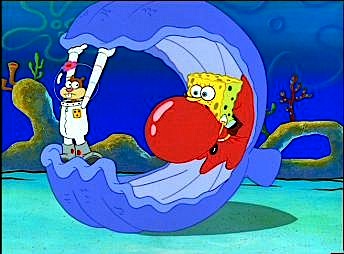 Raw
shellfish—However proud an Osaka sushi chef
is of the pristine quality
of his raw seafood, shellfish, which are bottom
feeders, pick up a lot of nasty
bacteria, and, if uncooked, they can easily be
transferred to you.
Cooking should kill most of them off, and the
fish used for sashimi is
pretty safe. But eating raw oysters or mussels
anywhere can be hazardous.
I know: I ate a bad oyster in New Orleans once and was
never so sick in my
life. Oyster-causing hepatitis can be a killer that
destroys your liver (and
thereby your ability to drink alcohol). You can also
get a tapeworm from eating
contaminated raw meat.
Raw
shellfish—However proud an Osaka sushi chef
is of the pristine quality
of his raw seafood, shellfish, which are bottom
feeders, pick up a lot of nasty
bacteria, and, if uncooked, they can easily be
transferred to you.
Cooking should kill most of them off, and the
fish used for sashimi is
pretty safe. But eating raw oysters or mussels
anywhere can be hazardous.
I know: I ate a bad oyster in New Orleans once and was
never so sick in my
life. Oyster-causing hepatitis can be a killer that
destroys your liver (and
thereby your ability to drink alcohol). You can also
get a tapeworm from eating
contaminated raw meat.
Wild game—Next
time you enjoy a nice haunch of venison at a
restaurant in
the U.S., rest assured it came—by law—from an
inspected game farm.
Wild
game, even trout from crystalline Alaskan rivers, may
contain bad-ass bacteria,
and before you eat what you kill in the wild, you’d
better be damn sure the
animal was healthy. If you do see “wild game” on
a menu, then it was most
probably venison or grouse that was shot in Scotland
and approved for sale by a
game inspector. One of the best, most reliable sources
for wild game is
D’Artagnan Foods, which imports inspected foods
including Scottish pheasant, redlegged
partridge, grouse and wood pigeon.
game farm.
Wild
game, even trout from crystalline Alaskan rivers, may
contain bad-ass bacteria,
and before you eat what you kill in the wild, you’d
better be damn sure the
animal was healthy. If you do see “wild game” on
a menu, then it was most
probably venison or grouse that was shot in Scotland
and approved for sale by a
game inspector. One of the best, most reliable sources
for wild game is
D’Artagnan Foods, which imports inspected foods
including Scottish pheasant, redlegged
partridge, grouse and wood pigeon.
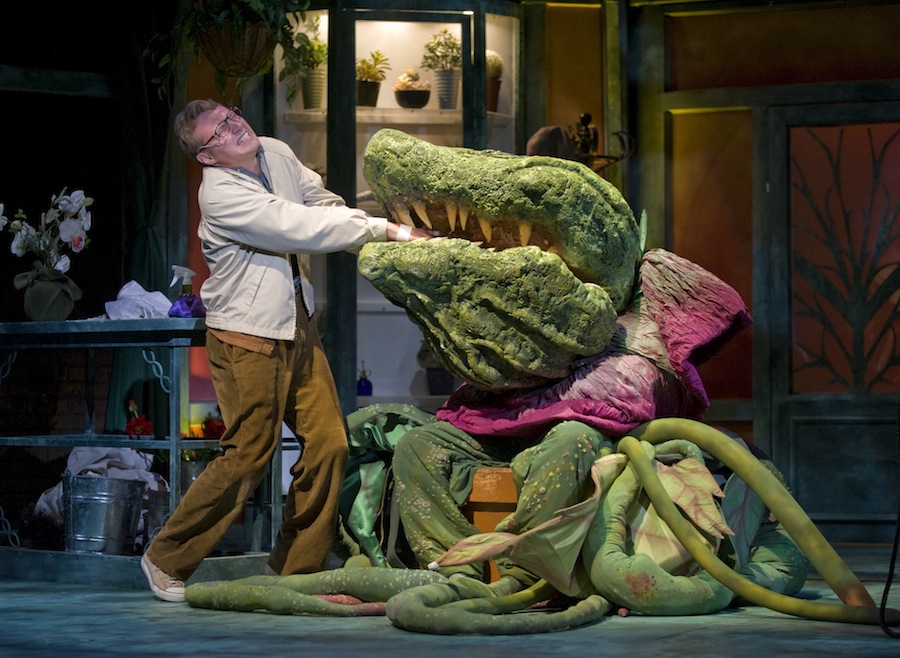 Fruits and Vegetables--Every
guidebook to a foreign country stresses not
eating unwashed, uncooked vegetables and fruits.
And too many people have
done so anyway at their peril and ended up sick as a
dog from salmonella,
cyclospora, campylobacter, and more. You
can wash and scrub and
peel raw fruits and vegetables and remove the outer
bacteria, but that won’t
kill what’s inside. Boiling and cooking is more
advisable. And watch out for
desserts, too, that may have raw fruit in or around
them. Order a nice slice of
apple pie instead.
Fruits and Vegetables--Every
guidebook to a foreign country stresses not
eating unwashed, uncooked vegetables and fruits.
And too many people have
done so anyway at their peril and ended up sick as a
dog from salmonella,
cyclospora, campylobacter, and more. You
can wash and scrub and
peel raw fruits and vegetables and remove the outer
bacteria, but that won’t
kill what’s inside. Boiling and cooking is more
advisable. And watch out for
desserts, too, that may have raw fruit in or around
them. Order a nice slice of
apple pie instead.
Pork--Some Americans still harbor an
irrational fear about eating pork that
has not been cooked to shoe leather, supposedly to
kill off the trichinosis
larvae. The fact is, there are less than a dozen
reported cases of trichinosis
in the U.S. each year, and all of
them come from eating wild game, including a wild hog.
Hog production in the
U.S. is extremely hygienic, so cooking your pig till
pink is just fine. In the
rest of the world, however, particularly in Third
World countries, such hygiene
is not standard practice, so only eat pork there that
has been thoroughly
cooked through to 160 degrees F.
that
has not been cooked to shoe leather, supposedly to
kill off the trichinosis
larvae. The fact is, there are less than a dozen
reported cases of trichinosis
in the U.S. each year, and all of
them come from eating wild game, including a wild hog.
Hog production in the
U.S. is extremely hygienic, so cooking your pig till
pink is just fine. In the
rest of the world, however, particularly in Third
World countries, such hygiene
is not standard practice, so only eat pork there that
has been thoroughly
cooked through to 160 degrees F.
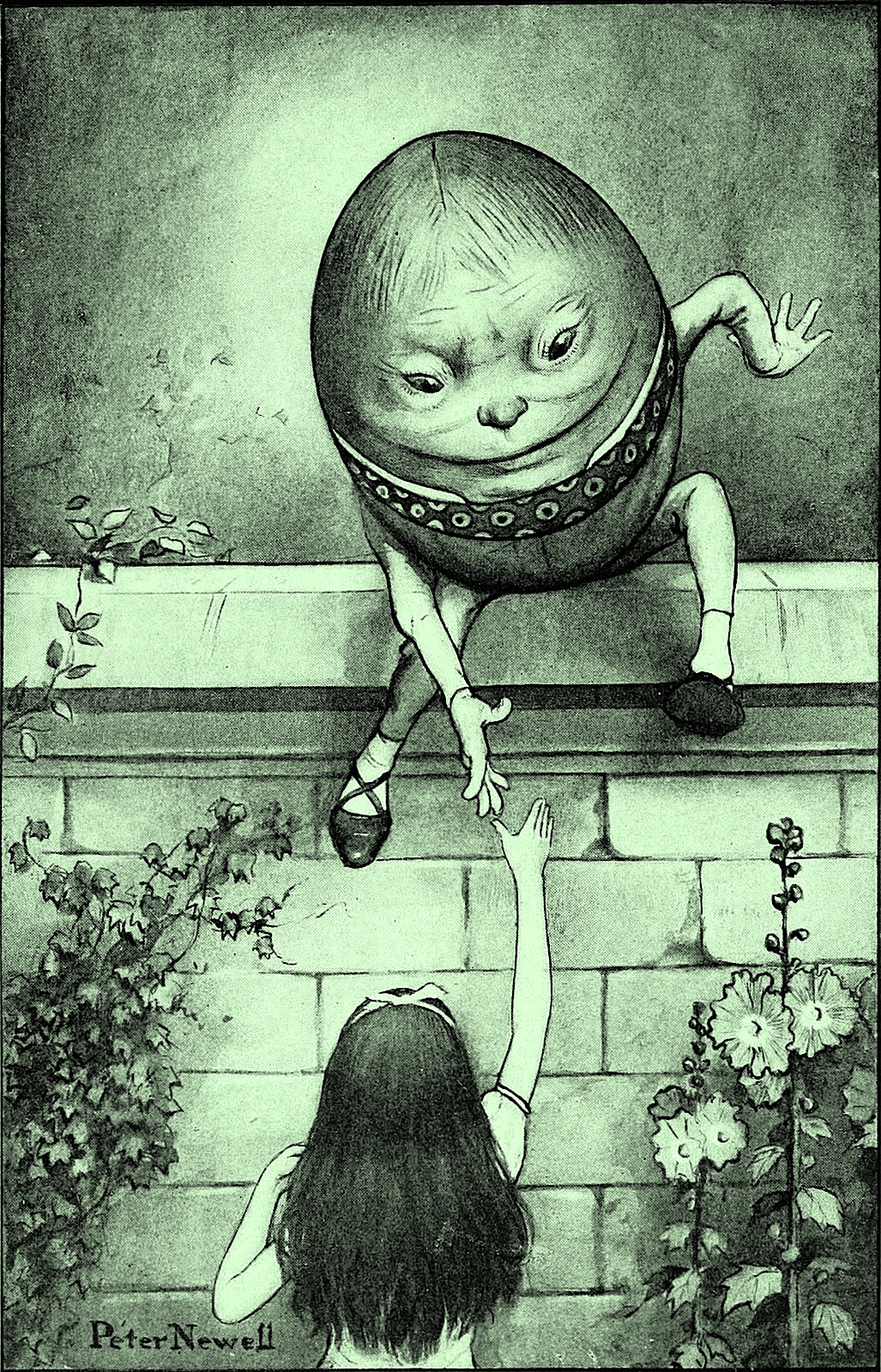 Eggs--Bet
you didn't know that half of all egg-related
illnesses, mainly
salmonella, are picked up in restaurants, including in
the U.S. The
problem is in the chicken that lays them, not the
shell itself, though this
should be thoroughly washed, something that cannot be
counted on abroad, where
a freshly laid egg is cherished. That means no Caesar
salads abroad and no
steak tartare with a raw egg in it. Forget the
raw steak too.
Eggs--Bet
you didn't know that half of all egg-related
illnesses, mainly
salmonella, are picked up in restaurants, including in
the U.S. The
problem is in the chicken that lays them, not the
shell itself, though this
should be thoroughly washed, something that cannot be
counted on abroad, where
a freshly laid egg is cherished. That means no Caesar
salads abroad and no
steak tartare with a raw egg in it. Forget the
raw steak too.
Water--It used to be a maxim for traveling
abroad not to drink the water,
even in Europe. 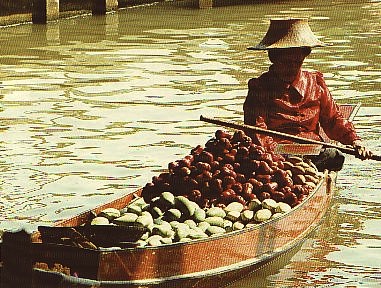 But this has
largely become irrelevant if you’re staying
in a city like Paris, Stockholm or Tokyo, where the
better hotels filter their
water. Nevertheless, unless you ask, you won't
know that and even
brushing your teeth with contaminated water is going
to be bad news.
Bottled water is crucial when traveling, and the
more familiar the label
on the bottle, the better off you’ll be.
Drinking from a fountain is very
stupid. A friend of mine recently spent three
weeks in spasmodic pain
just because he caught a wave of river water in his
mouth while sailing through
Bangkok.
But this has
largely become irrelevant if you’re staying
in a city like Paris, Stockholm or Tokyo, where the
better hotels filter their
water. Nevertheless, unless you ask, you won't
know that and even
brushing your teeth with contaminated water is going
to be bad news.
Bottled water is crucial when traveling, and the
more familiar the label
on the bottle, the better off you’ll be.
Drinking from a fountain is very
stupid. A friend of mine recently spent three
weeks in spasmodic pain
just because he caught a wave of river water in his
mouth while sailing through
Bangkok.
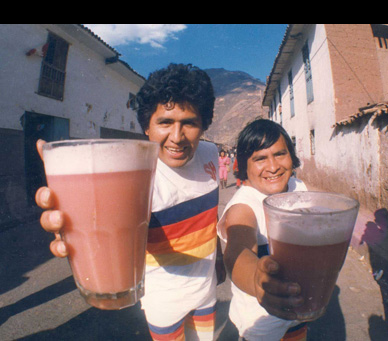
Local brews--If you’re taking a pleasant
cruise down the Amazon with a
reputable outfitter, you probably don’t need to be
told about chicha.
But just in case you are
invited by some local tribesmen anywhere in the Amazon
Basin to knock back a
tot of chicha,
do anything to avoid
it. Chicha
comes in many forms, but
it always involves saliva. In some cases the
cassava root is chewed by
the tribeswomen and the juice spat into a bowl that is
left to ferment into
alcohol. The honor of drinking chicha
is one that may follow you home for the next several
months. Fortunately,
I have not been so honored; unfortunately, I do not
know the etiquette for
turning the chief’s offer to take a swig. Maybe tell
him your doctor put you on
antibiotics and said you can’t drink alcohol.
❖❖❖
IN MEMORY OF A MASTER:
CHARLIE TROTTER
by John Mariani
 I
suppose I
should say something about the death of Charlie
Trotter.
I
suppose I
should say something about the death of Charlie
Trotter.
If that sounds
lukewarm, I don’t mean it to be: it’s just I’m
saddened by so many overwrought,
hyperventilated assessments suddenly made over a
great chef whom the media
abandoned years ago.
Indeed, two
years ago, the NY Times
wrote his
professional obituary, wondering what had ever
become of him—despite his still
running his restaurant, publishing many books on
food and hospitality, and having his own
award-winning PBS TV show.
My own
relationship with Charlie—whose very name had the
brash ring of the Midwest in
it—began in 1987 when he opened his eponymous
restaurant in Chicago at a time
when the city’s finest restaurants all had names
like Le Français, Le Perroquet
and Les Nomades.
Chicago’s
food scene was bustling if too often imitative:
concepts innovated in NYC or
L.A. were picked up in Chicago, often refined and
made more accessible.
So
when Charlie Trotter’s opened, in
homage to the very finest cuisine and service of
Charlie’s idols, whose signed
menus lined the walls, it shook up the food
establishment by being as
inextricably tied to his bulldog personality as was
Spago to Wolfgang Puck’s
and Chez Panisse to Alice Waters’.
Charlie had a
feverish mind that consumed the best from every
quarter then put it through the
forge of his own inner fire. He
was a demanding master, intent that no one in his
employ waste a moment’s time when
there were always so many details he felt needed to
be immediately addressed. His dining room staff wore
double-sided
tape on their shoe soles to pick up dirt and lint
from the carpet.
Scores 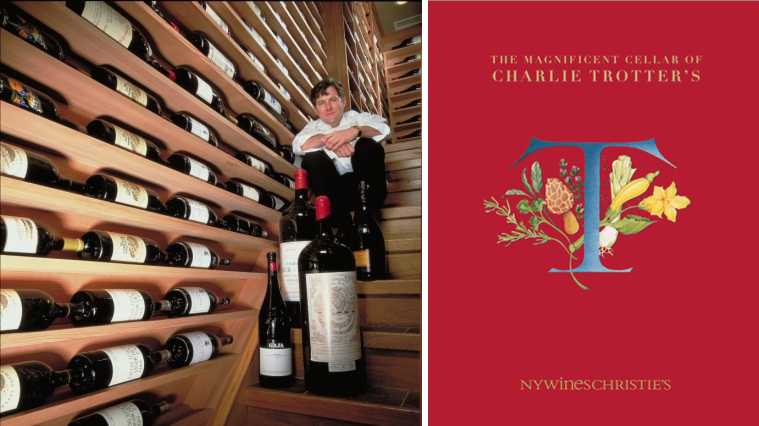 of eminent
graduates from his
kitchen—chefs like David Myers, David LeFevre, Ric
Tramonto, Graham Elliott,
and many others who cherished their arduous tenures
at the restaurant—testify to the
withering force of Charlie’s discontent.
of eminent
graduates from his
kitchen—chefs like David Myers, David LeFevre, Ric
Tramonto, Graham Elliott,
and many others who cherished their arduous tenures
at the restaurant—testify to the
withering force of Charlie’s discontent.
I first wrote
about him in Esquire’s
Best
New Restaurants in 1988, contending that he was a
chef dedicated to “building
something solid for the future” of Chicago. I wrote that “Some of the food
sounds eccentric”—I recall my
eyebrows rose at foie gras ravioli with mango and
lemongrass sauce—“but Trotter
brings most of it off with enormous finesse and
shows a compelling belief in
himself that puts him in the top ranks of Chicago’s
chefs.”
In fact,
Charlie’s ego was often on display, and after
keeping track of my not having
written much about him in
ensuing years, he challenged me that “on your next
trip to Chicago, if I don’t
serve you the best meal of your life, I’ll never say
another word.”
I responded by telling him, “Charlie, I
think you are a great chef but you seek to overwhelm
your guests with so many
dishes that your batting average is always going to
be high, even if several
dishes strike out.”
 We
actually
negotiated the number of courses he would serve
me—six—and next time I was in
Chicago I took him up on his challenge.
I sat down, Champagne was poured, and out
came the first course—on which
he had arrayed eight items! I cried foul but enjoyed
the meal immensely.
Was it the greatest meal of my life?
No, but my admiration for what I enjoyed was in
equal measure to my enjoyment
of the man’s Midwestern chutzpah.
We
actually
negotiated the number of courses he would serve
me—six—and next time I was in
Chicago I took him up on his challenge.
I sat down, Champagne was poured, and out
came the first course—on which
he had arrayed eight items! I cried foul but enjoyed
the meal immensely.
Was it the greatest meal of my life?
No, but my admiration for what I enjoyed was in
equal measure to my enjoyment
of the man’s Midwestern chutzpah.
For 17 years
Charlie never veered from his pursuit of excellence,
though, as the media quietly
backed away from him, he went through a period of
malaise that ultimately
forced him to close his restaurant earlier this
year, to great fanfare. The last meal served was covered
extensively. He said was going to
study philosophy,
travel, learn more about what he’d neglected to
learn for lack of time.
Perfectionists
are
like that. There’s never enough time to do what you
need to do much less do
what you’d like to do. The medical
autopsy has not yet determined what caused Charlie’s
sudden death—he was found
unconscious at home—but his legacy is one of
extraordinary achievement in a
field he not only helped plant but also fertilized
with his own nourishing
spirit. He was, in a word, a master, and might well
have been in any field he
chose to pursue.
Thank heavens it
was in the kitchen.
America eats—no,
dines—much better because of Charlie Trotter.
❖❖❖
NEW YORK CORNER
by John Mariani
Le
Bernardin
155 West 51st
Street
212- 554-1515
www.le-bernardin.com
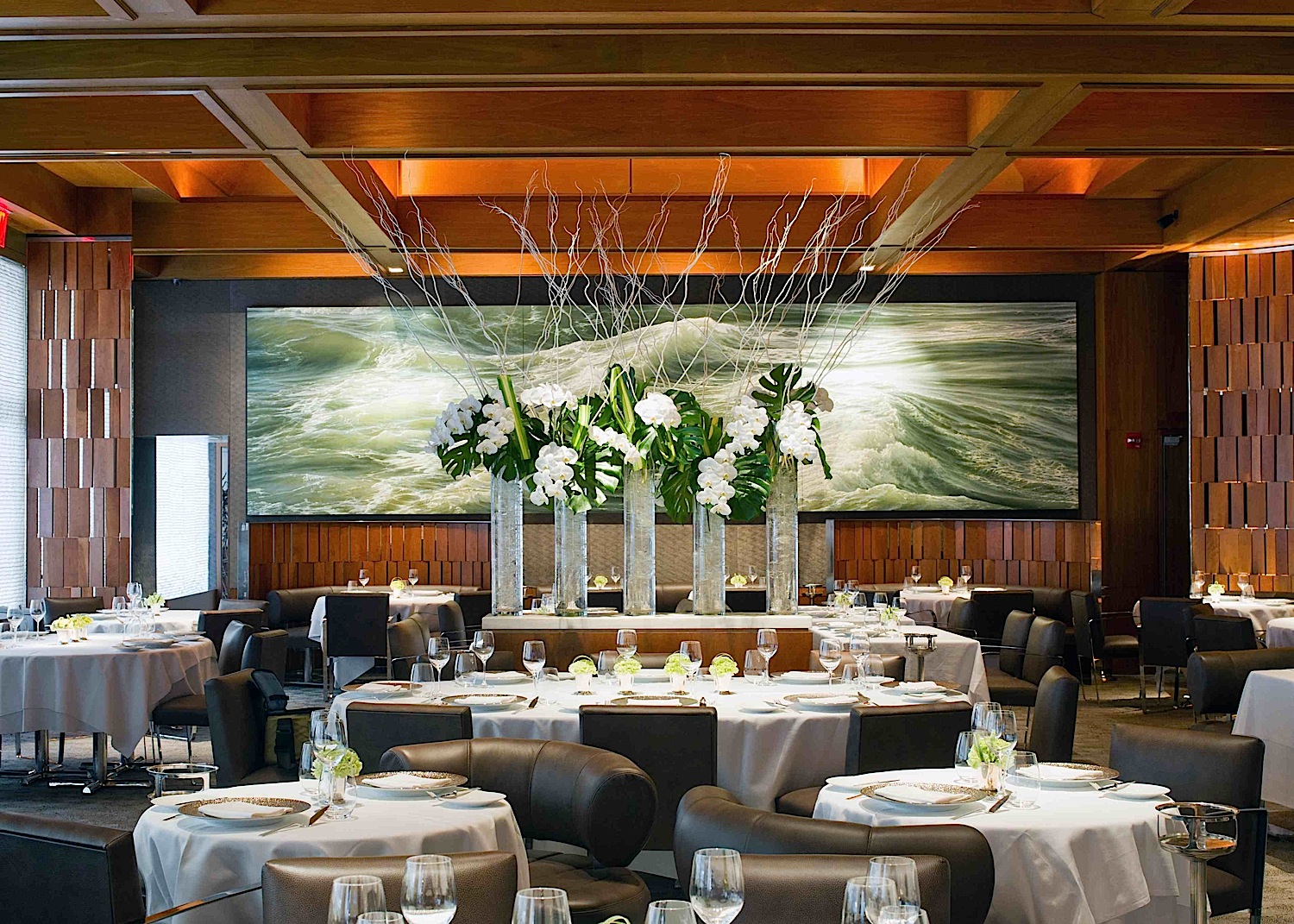
The
great Le Bernardin is wondrous proof of Albert
Einstein's maxim that "Everything should be made as
simple as possible, but not simpler."
 The genius of
true simplicity is to discard whatever is not
essential, however enticing, and in the cooking of
chef/partner Eric Ripert you
find on every plate an idea so thoroughly and
beautifully thought through that
there is no room for error.
The genius of
true simplicity is to discard whatever is not
essential, however enticing, and in the cooking of
chef/partner Eric Ripert you
find on every plate an idea so thoroughly and
beautifully thought through that
there is no room for error.
This has been the case since Le
Bernardin was opened in Paris by Chef
Gilbert Lecoze and his sister Maguy (left) in 1972,
refined still further upon
translating its style to NYC in 1986. Gilbert
was rigorously classic in
his French techniques yet always inventive, not least
in treating American
seafood species with respect and by eliminating heavy,
cover-all sauces from
his dishes. His fish carpaccios are copied worldwide
by other chefs.
The menu evolved but was always
indelibly à la Le Bernardin, and the sad
passing away of Gilbert in 1994 brought longtime chef
de cuisine Eric Ripert (below) to
the foreground, as Maguy strived to maintain the
spirit and ambiance of the
restaurant despite her loss. Since then, the two
of them have never
wavered in their commitment to exquisite good taste,
from the new décor and
lounge to the table settings, staff outfits, and
Maguy's wardrobe itself.
For her, 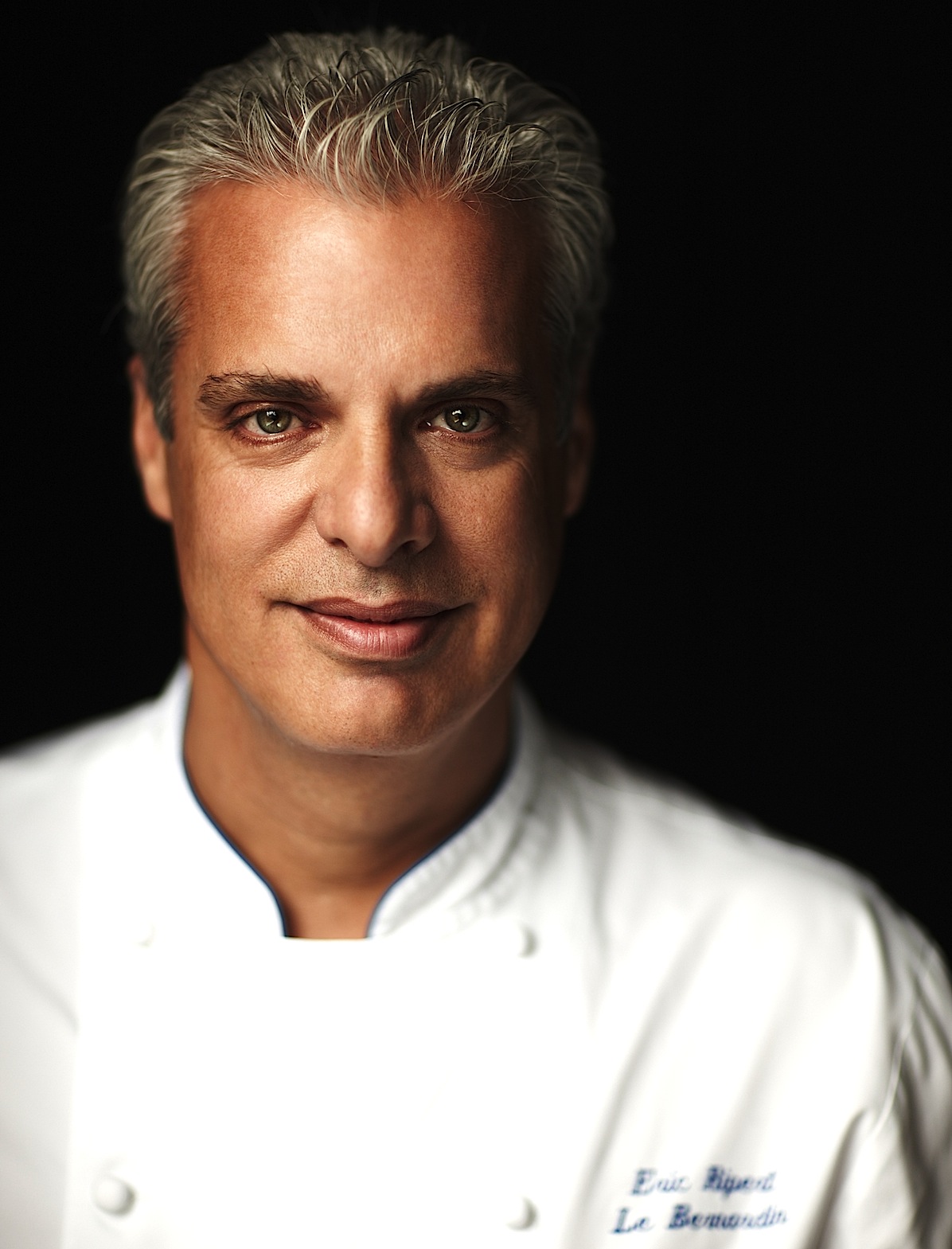 Coco Chanel's
dictum that "Fashion is made to go out of
style" is effortlessly applied each evening by the
ever-glamorous Madame
Maguy.
Coco Chanel's
dictum that "Fashion is made to go out of
style" is effortlessly applied each evening by the
ever-glamorous Madame
Maguy.
The room retains its magnificent
coffered ceiling, with soft light
spreading over each well-set table. And, while the
illumination allows you to
see everyone in the room, it feels distinctly intimate
at your own seating. On
the wall is an extraordinary seascape by Brooklyn
artist Ran Ortner, as perfect
a metaphor for Le Bernardin as can be imagined.
Sommelier Aldo Sôhm has
sustained Le Bernardin's wine list as a model for fine
dining establishments,
not least in the small European estates of unique
character. Put yourself
in his hands and you will discover how fine a new wine
from a region you
thought you knew can be so impressive—even more so
regions you never knew at
all.
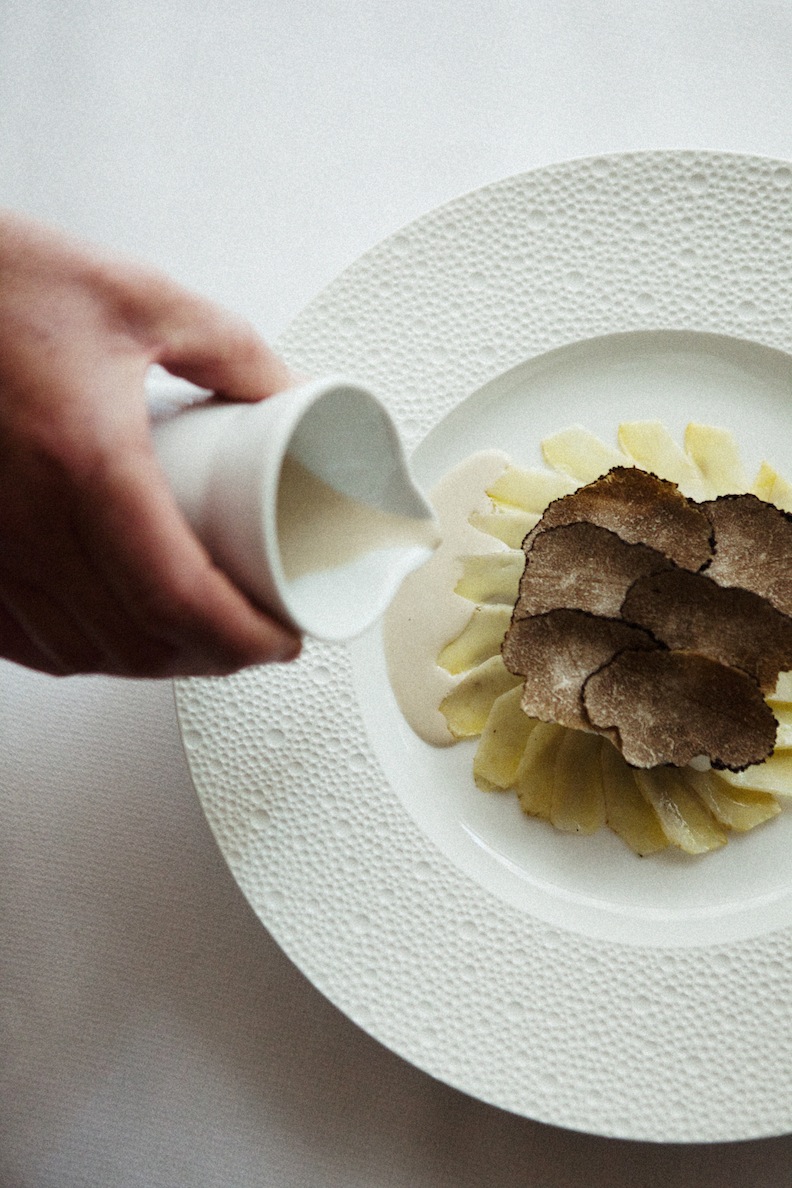 Eric,
whom I know well enough to call by his first name,
recently did a tasting
menu for me, my wife, our son and his fiancée.
So, starting with a glass of
Champagne, we began, each course paired with a wine,
and each dish designed to
capitalize on the one before in terms of tastes,
texture, and seasonings.
Eric,
whom I know well enough to call by his first name,
recently did a tasting
menu for me, my wife, our son and his fiancée.
So, starting with a glass of
Champagne, we began, each course paired with a wine,
and each dish designed to
capitalize on the one before in terms of tastes,
texture, and seasonings.
Slivers of fluke came with a
wasabi-nori crisp in a so-black pepper
vinaigrette, a signal homage to Gilbert’s seafood
carpaccios now found
everywhere. King fish caviar sashimi followed in
the same line, with
osietra caviar and a light marinière broth,
enjoyed with a Clos Floridéne,
Graves 2011 and a Pernand Vergelesses 1er Cru Sous
Frétille.
Lightly sautéed
langoustine—big and plump—had the woodsy flavors of
truffles
and chanterelle mushrooms and the tang of a balsamic
vinaigrette, while the
next dish was barely cooked shrimp with a brown butter
dashi, accompanied by a Montille Soeur
& Frère 2010.
Ripert is fascinated by
Japanese and Asian ideas about seafood flavorings,
more so than was Gilbert,
demonstrated in a King crab medley with a warm
matsutake custard and a
seaweed-shiitake broth, which seemed to me too close
to what I might have
around town in a good Japanese restaurant. Halibut
with opal basil and shaved
fennel with a red miso citrus  emulsion restored the
balance unique to Le
Bernardin and went well with a fine Riesling GG
Eitelsbacher Karthäuserhofberg
and half-dry Karthäuserhof Ruwer 2009.
emulsion restored the
balance unique to Le
Bernardin and went well with a fine Riesling GG
Eitelsbacher Karthäuserhofberg
and half-dry Karthäuserhof Ruwer 2009.
The meal, over two hours, sat
lightly on the appetite and stomach,
satisfying but not exhausting, so that desserts like
chestnut cream, light
chocolate mousse, and a cinnamon tuile, and a passion
fruit mousse with Meyer
lemon, and pistachio ice cream were as much
refreshments as rewards for
cleaning our plates.
Le Bernardin
has received more accolades than any restaurant I know
of—enough stars from the media to light the Empire
State Building—and when
asked, as I often am, what my favorite NYC restaurant
is, I respond without
hesitation, Le Bernardin. Indeed, were Le
Bernardin to close, as it
someday must, it would be a loss as devastating to me
as the Yankees moving to
Cincinnati or the Café Carlyle being turned
into a dive bar. Uniqueness
is rare in restaurants and Le Bernardin, in its
elegant, deceptively simple
way, is the savory embodiment of that virtue.
Le Bernardin is open for lunch, Mon.-Fri. and for dinner Mon.-Sat. dinner $135 for four courses, with tasting menus at $155 and $198.
❖❖❖
NOTES FROM THE
WINE CELLAR
Some California Pinot Noirs Aim
for Higher Quality, Not Alcohol
by John Mariani
 I’m
often on the edge of despairing over California’s
pinot noir producers’
refusal to back down on making massive blockbuster
wines with none of the
finesse they always promise on their labels and
websites. Then I come
across California pinots that raise my hopes that
there are good producers who
have succeeded in making wines of refinement and
complexity, without the high
alcohol levels that mar the wine of so many of their
competitors in Napa and
Sonoma.
I’m
often on the edge of despairing over California’s
pinot noir producers’
refusal to back down on making massive blockbuster
wines with none of the
finesse they always promise on their labels and
websites. Then I come
across California pinots that raise my hopes that
there are good producers who
have succeeded in making wines of refinement and
complexity, without the high
alcohol levels that mar the wine of so many of their
competitors in Napa and
Sonoma.
Certainly
the argument can -- and should -- be made that pinot
noirs
from any region outside of France need not mimic the
benchmark style of
Burgundy. Soils and climates differ radically
from the sun-deprived
vineyards of the Cote d’Or to the overheated floor of
Napa Valley and other
pinot noir-producing areas in South America and
Australia. (Frankly, I don’t
know what Italian wineries are Italian wineries
are aiming for in
their mostly insipid pinot noirs.)
Some Californians, like Pat Rooney
of Windsor
Sonoma Winery north of Santa Rosa, try very hard to
achieve a Burgundy
style, focusing on the grapes themselves and, usually,
not filtering the wine.
I don’t ask for parity between
Burgundy and the other regions, but I am
dismayed at how often California pinots don’t even
taste like pinot, a
notoriously fickle grape to grow. I admire the
sunny fruit that brightens
California pinot noirs, but I don’t like being hit in
the mouth with a rush of
grape preserves and enough oak to fuel a bonfire. When
pinot noirs go beyond
14.5 percent alcohol, sometimes a lot higher, I stop
drinking after one glass.
And then a California pinot noir
comes across my dinner table that both amazes
me for its quality and restores my faith in what the
varietal can be when made
with care. I have always enjoyed Twomey Cellars'
merlots; I think I’m even more impressed by its pinot
noirs -- four of
them, from different regions, including Anderson
Valley, Russian River Valley,
Healdsburg and the Sonoma Coast. Twomey was
established in 1999 by the
Duncan family, who also own the esteemed Silver Oak
Cellars. Twomey is named after owner Ray Duncan’s
mother. None of
Twomey’s pinot noirs top 13.6 percent in alcohol; and
one, its 2011 Twomey Bien
Nacido Vineyard Pinot Noir, only hits 12.9
percent. Its 2009 Russian River
Valley Pinot Noir took first place in the American
Wine Society’s National Tasting Project in 2012.
"Wine
grapes and zucchini are a lot alike,” Daniel Baron,
64,
(right)
director of winemaking at Twomey, said in a telephone
interview. “Years ago,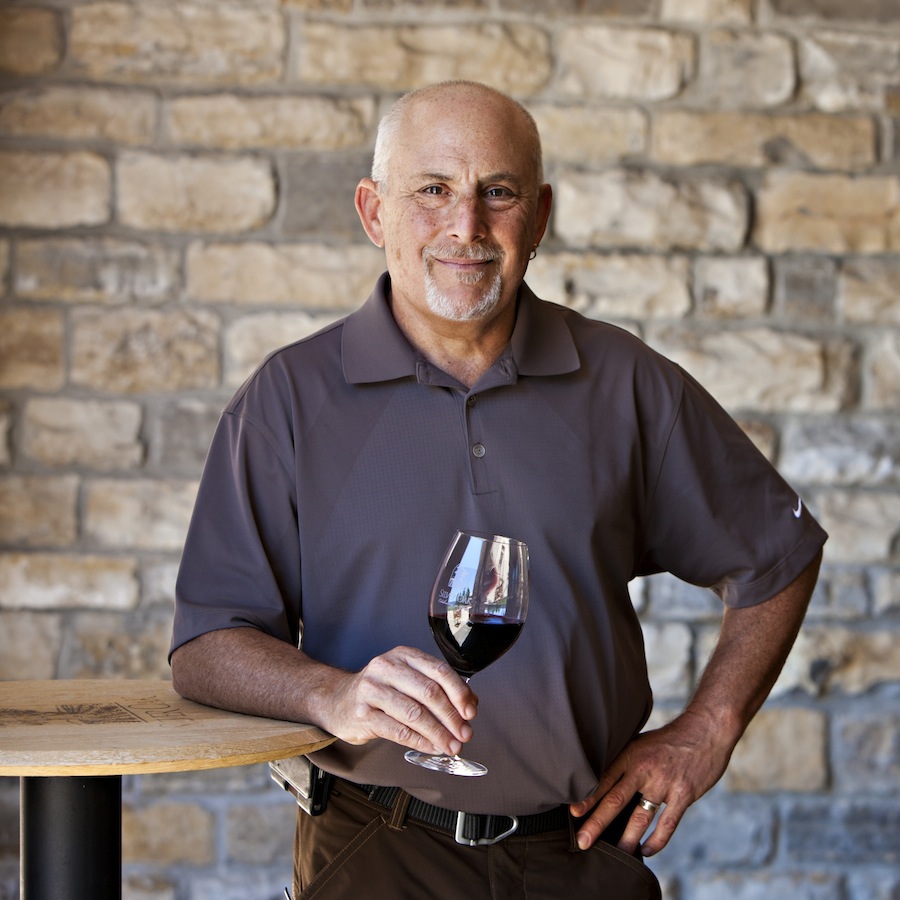 I
had a garden planted with zucchini and they grew to be
three feet long. I didn’t
know what to do with them. They were impossible to
cook with. So, too, wine
grapes that get too ripe start to taste like
prunes. The trick with pinot
noir is to choose plots carefully, then go out every
day to make sure the
grapes are not getting too ripe. I learned from the
Institut Francais de la Vigne et du Vin to chew on the
skins and
squeeze the pulp on the roof of my mouth to taste how
the grapes are
developing. If you pick pinot noir too ripe, you won’t
be able to tell pinot
noir from merlot or syrah.”
I
had a garden planted with zucchini and they grew to be
three feet long. I didn’t
know what to do with them. They were impossible to
cook with. So, too, wine
grapes that get too ripe start to taste like
prunes. The trick with pinot
noir is to choose plots carefully, then go out every
day to make sure the
grapes are not getting too ripe. I learned from the
Institut Francais de la Vigne et du Vin to chew on the
skins and
squeeze the pulp on the roof of my mouth to taste how
the grapes are
developing. If you pick pinot noir too ripe, you won’t
be able to tell pinot
noir from merlot or syrah.”
 Twomey’s
pinot noirs are definitely in the Burgundian style,
layered and
complex, and assured of aging beautifully, which
cannot easily be said of
blockbuster pinots. I’ve also been very happy
with several other
California pinot noir makers, including Failla Hirsch
Vineyard, Freeman, Williams Selyem, and Morlet
Family, all producing fine examples of what the
varietal should be -- a
medium bodied, velvety wine with flower and bright
fruit flavors.
Twomey’s
pinot noirs are definitely in the Burgundian style,
layered and
complex, and assured of aging beautifully, which
cannot easily be said of
blockbuster pinots. I’ve also been very happy
with several other
California pinot noir makers, including Failla Hirsch
Vineyard, Freeman, Williams Selyem, and Morlet
Family, all producing fine examples of what the
varietal should be -- a
medium bodied, velvety wine with flower and bright
fruit flavors.
Those
markers for pinot noir are very evident in the Inman
Family Wines' 2010 pinot from its Olivet Grange
vineyards in the Russian River Valley. Owner Kathleen
Inman (left)
likes to say, “I
operate as a one-woman show since I manage the
vineyard, make the wines and
answer the phones.” She adds: “I call myself a
groper. I touch and taste
in the vineyard and don’t go by numbers. Pinot noir is
the most feminine of
wines, and I want that delicacy, perfume and elegance
in my wine.”
The 2010 was light on the palate at
first, then revealed its young fruitiness,
not the cloying jamminess of other California
examples. It reminded me of
an Aloxe-Corton, one of my favorite
middle-range Burgundies, though at $68 the Inman has
raised a few eyebrows.
With just 12.5 percent alcohol and 23 months in French
oak, this wine proves
that elegance and aromatics are better achieved with
restraint, rather than by
pushing the grapes.
THAT COSMO GIRL

"Was
I supposed to break
things off with Stoner over text? Was I supposed to
turn away the cronuts (fig
and mascarpone flavored, fyi) but stay vague about the
reason, as if Stoner
were an idiot who wouldn't know what that meant? Was I
supposed to stick to the
original plan and keep my cool until dinner? What kind
of asshole takes the
cronuts, anyway? What kind of asshole rejects cronuts?
How was it possible that
a pastry would factor into one of the biggest moral
dilemmas of my adult dating
life?--Helin Jung, “Can
You Accept Cronuts from a Man You’re About to Dump?” Cosmopolitan.

Villagers in Stilton, Great Britain,
tried to overturn the rule which states that Stilton
blue
cheese can only be produced in the Midlands, where
it's believed to have
originated. "It's ridiculous that we can't make
Stilton in Stilton," said a local store owner. "People come in
and ask for it several times a week and I
have to tell them we can't legally call it Stilton."
According to the EU ruling, Stilton can only be
produced in Derbyshire and Nottinghamshire
and Leicestershire - including the area of Melton
Mowbray.
❖❖❖
Any of John Mariani's
books below may be ordered from amazon.com.
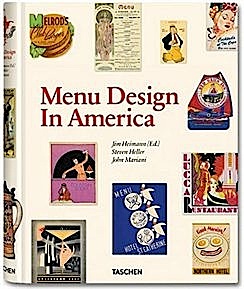 |
My latest book, which just won the prize for best book from International Gourmand, written with Jim Heimann and Steven Heller, Menu Design in America, 1850-1985 (Taschen Books), has just appeared, with nearly 1,000 beautiful, historic, hilarious, sometimes shocking menus dating back to before the Civil War and going through the Gilded Age, the Jazz Age, the Depression, the nightclub era of the 1930s and 1940s, the Space Age era, and the age when menus were a form of advertising in innovative explosions of color and modern design. The book is a chronicle of changing tastes and mores and says as much about America as about its food and drink.
“Luxuriating vicariously in the pleasures of this book. . . you can’t help but become hungry. . .for the food of course, but also for something more: the bygone days of our country’s splendidly rich and complex past. Epicureans of both good food and artful design will do well to make it their coffee table’s main course.”—Chip Kidd, Wall Street Journal.
“[The menus] reflect the amazing craftsmanship that many restaurants applied to their bills of fare, and suggest that today’s restaurateurs could learn a lot from their predecessors.”—Rebecca Marx, The Village Voice. |
"Eating Italian will never be the same after reading John Mariani's entertaining and savory gastronomical history of the cuisine of Italy and how it won over appetites worldwide. . . . This book is such a tasteful narrative that it will literally make you hungry for Italian food and arouse your appetite for gastronomical history."--Don Oldenburg, USA Today. "Italian
restaurants--some good, some glitzy--far
outnumber their French rivals. Many of
these establishments are zestfully described
in How Italian Food Conquered the World, an
entertaining and fact-filled chronicle by
food-and-wine correspondent John F.
Mariani."--Aram Bakshian Jr., Wall Street
Journal.
"Equal parts
history, sociology, gastronomy, and just
plain fun, How Italian Food Conquered the
World tells the captivating and delicious
story of the (let's face it) everybody's
favorite cuisine with clarity, verve and
more than one surprise."--Colman Andrews,
editorial director of The Daily
Meal.com. "A fantastic and fascinating
read, covering everything from the influence
of Venice's spice trade to the impact of
Italian immigrants in America and the
evolution of alta cucina. This book will
serve as a terrific resource to anyone
interested in the real story of Italian
food."--Mary Ann Esposito, host of PBS-TV's
Ciao
Italia. "John Mariani has written the
definitive history of how Italians won their
way into our hearts, minds, and
stomachs. It's a story of pleasure over
pomp and taste over technique."--Danny Meyer,
owner of NYC restaurants Union Square Cafe,
Gotham Bar & Grill, The Modern, and
Maialino.
|
 |
 |
 |
 |
 |
 |
 |
 |
 Everett Potter's Travel Report:
Everett Potter's Travel Report: 
 Eating Las Vegas
is the new on-line site for Virtual Gourmet
contributor John A. Curtas., who since 1995
has been commenting on the Las Vegas food
scene and reviewing restaurants for Nevada
Public Radio. He is also the
restaurant critic for KLAS TV, Channel 8 in
Las Vegas, and his past reviews can be
accessed at KNPR.org.
Click on the logo below to go directly to
his site.
Eating Las Vegas
is the new on-line site for Virtual Gourmet
contributor John A. Curtas., who since 1995
has been commenting on the Las Vegas food
scene and reviewing restaurants for Nevada
Public Radio. He is also the
restaurant critic for KLAS TV, Channel 8 in
Las Vegas, and his past reviews can be
accessed at KNPR.org.
Click on the logo below to go directly to
his site.

Tennis Resorts Online: A Critical Guide to the World's Best Tennis Resorts and Tennis Camps, published by ROGER COX, who has spent more than two decades writing about tennis travel, including a 17-year stretch for Tennis magazine. He has also written for Arthur Frommer's Budget Travel, New York Magazine, Travel & Leisure, Esquire, Money, USTA Magazine, Men's Journal, and The Robb Report. He has authored two books-The World's Best Tennis Vacations (Stephen Greene Press/Viking Penguin, 1990) and The Best Places to Stay in the Rockies (Houghton Mifflin, 1992 & 1994), and the Melbourne (Australia) chapter to the Wall Street Journal Business Guide to Cities of the Pacific Rim (Fodor's Travel Guides, 1991).


MARIANI'S VIRTUAL GOURMET
NEWSLETTER is published weekly. Editor/Publisher: John
Mariani.
Contributing Writers: Christopher Mariani, Robert Mariani,
John A. Curtas, Edward Brivio, Mort Hochstein,
Suzanne Wright, and Brian Freedman. Contributing
Photographers: Galina Stepanoff-Dargery,
Bobby Pirillo. Technical Advisor: Gerry McLoughlin.
© copyright John Mariani 2013
